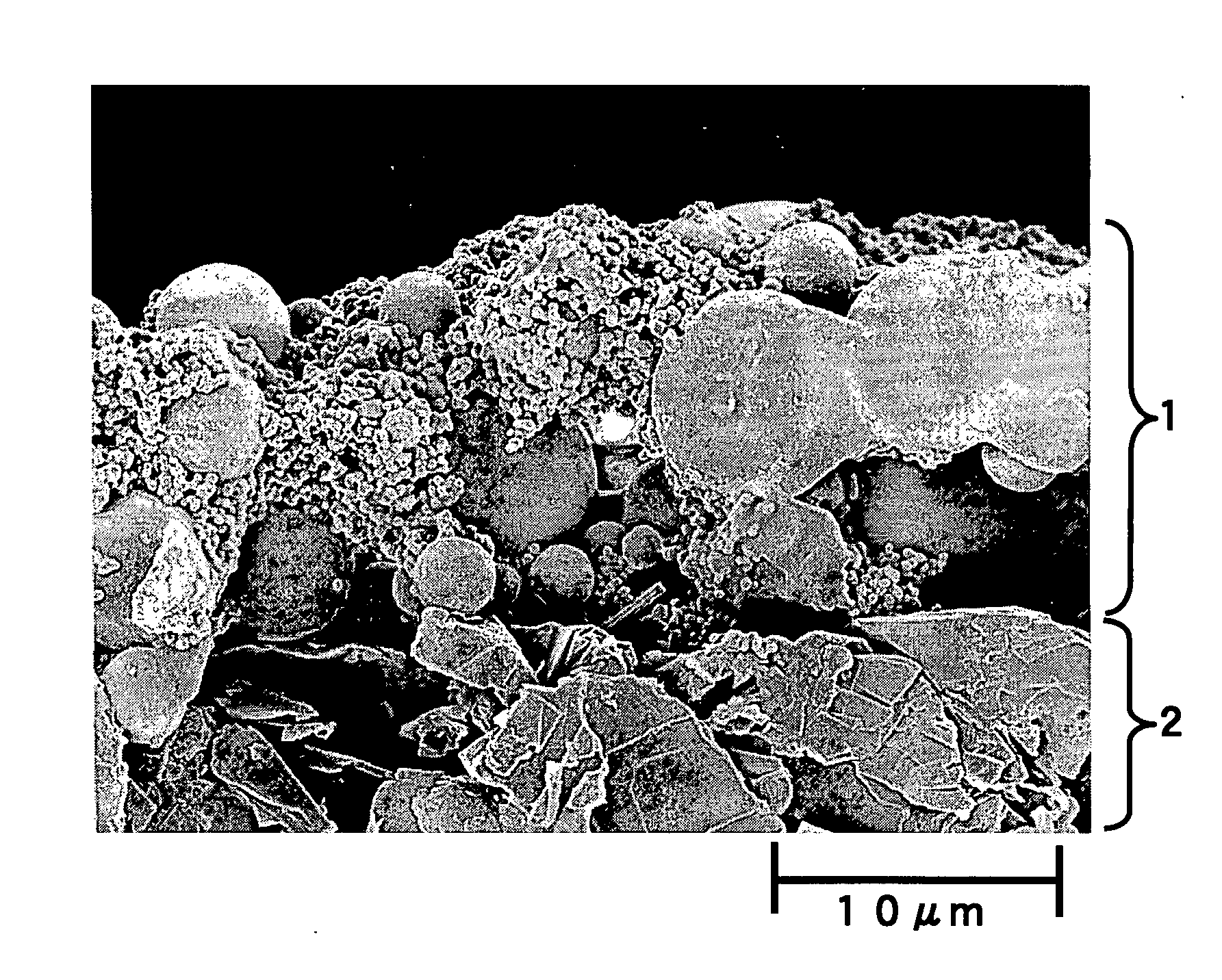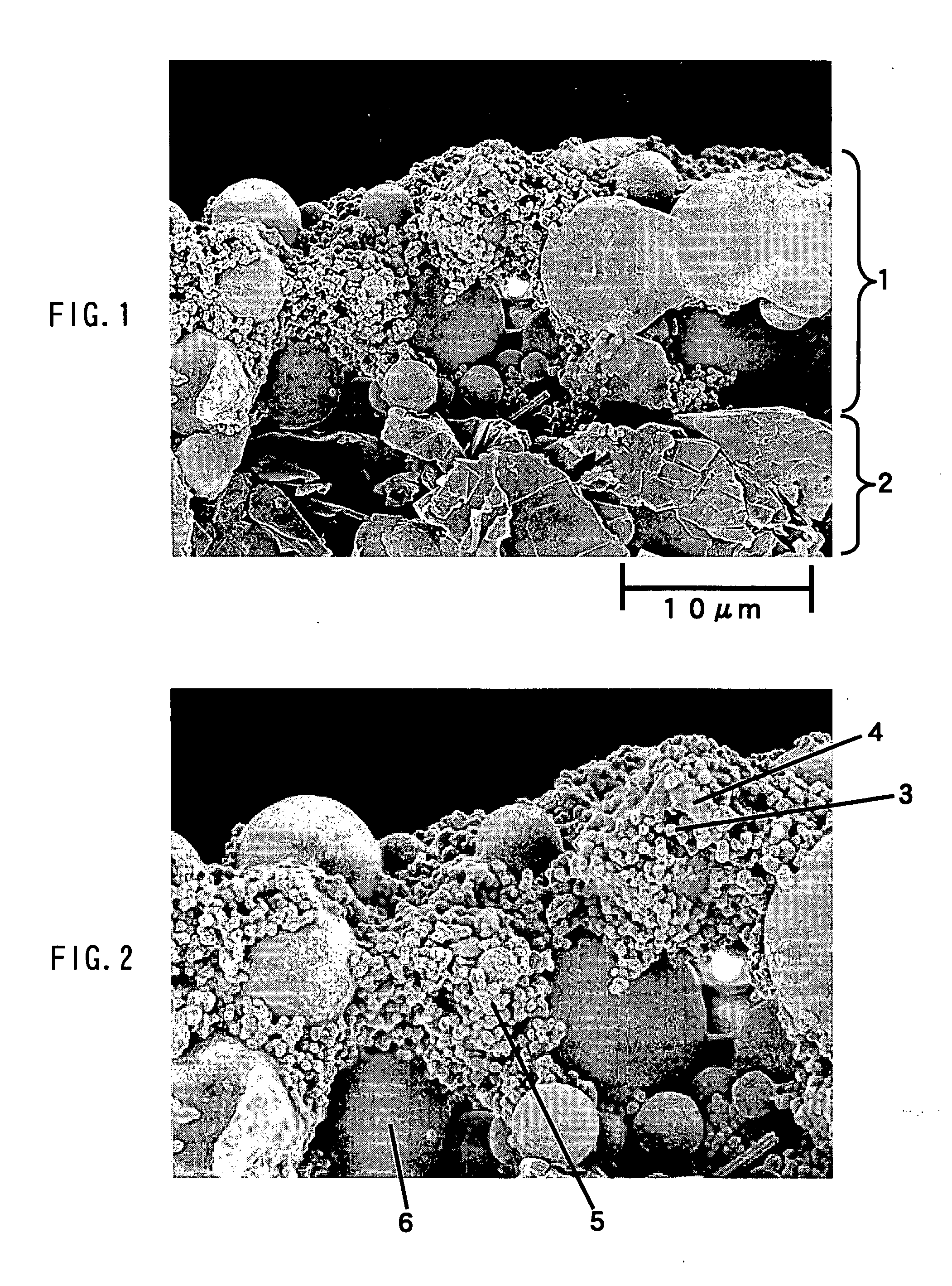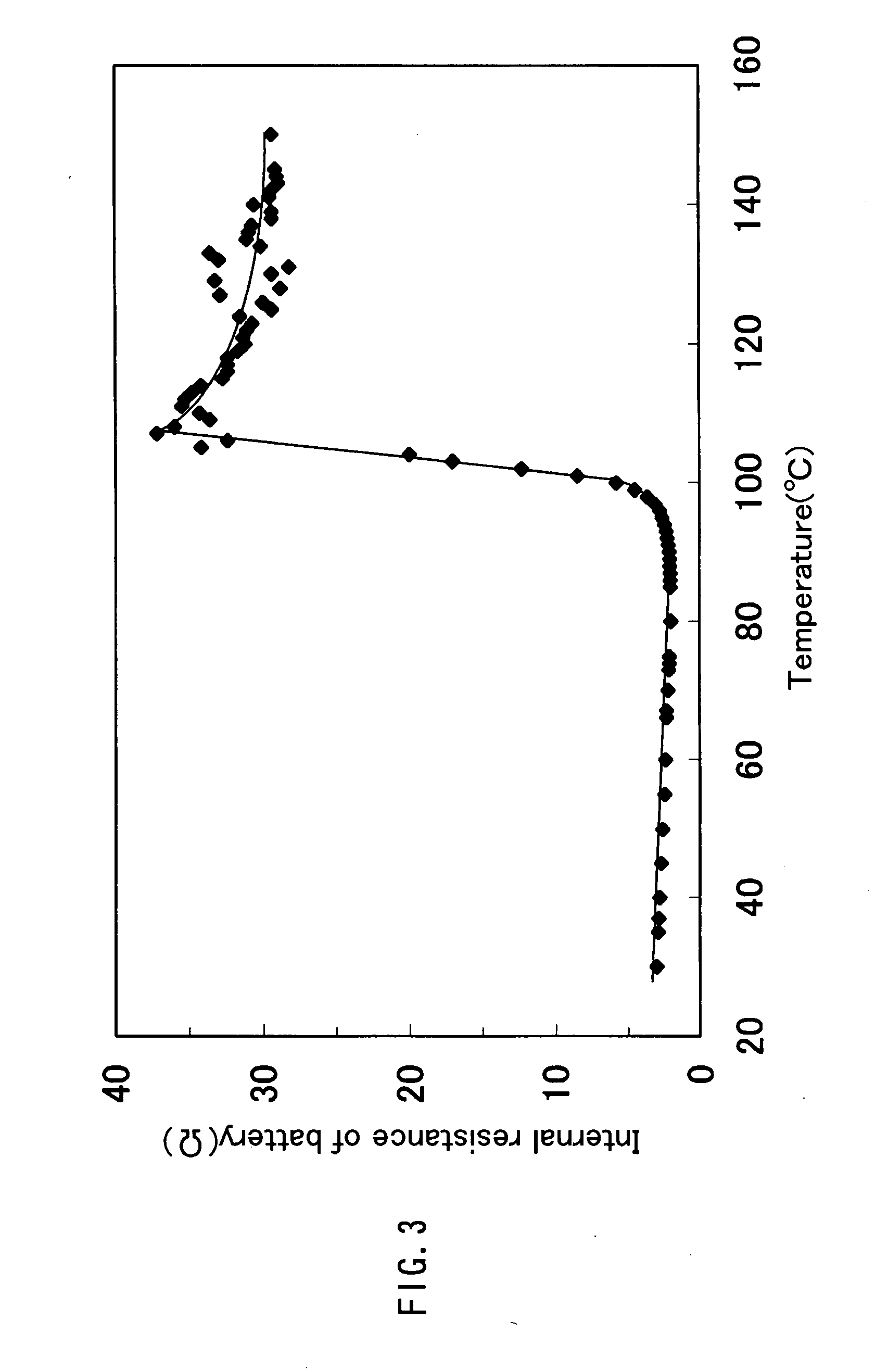Separator for Electrochemical Device, and Electrochemical Device
a technology of separation device and electrochemical device, which is applied in the direction of electrical apparatus, cell components, cell component details, etc., can solve the problems of residual stress contraction, insufficient margin for securing battery safety, distortion of film, etc., and achieve excellent safety
- Summary
- Abstract
- Description
- Claims
- Application Information
AI Technical Summary
Benefits of technology
Problems solved by technology
Method used
Image
Examples
example 2
[0119] 100 g of an ethylene-vinyl acetate copolymer (EVA) as a binder (having 34 mol % of a structural unit derived from vinyl acetate and manufactured by NIPPON UNICAR CO., LTD.) was introduced with 6 kg of toluene as a solvent into a container and stirred at room temperature so that it was dissolved homogeneously to obtain a binder solution. To this binder solution, 1 kg of a polyethylene powder as resin A (“FLOWBEADS LE1080” (trade name) manufactured by SUMITOMO SEIKA CHEMICALS CO., LTD.; melting point: 107° C.; average particle diameter: 6 μm; particle size distribution: 2 to 15 μm) was added and dispersed by stirring with a disperser on the condition of 2800 rpm for one hour. To this, 1 kg of a polypropylene powder as filler particles (“PPW-5” (trade name) manufactured by SEISHIN ENTERPRISE CO., LTD.) was added and stirred with a disperser on the condition of 2800 rpm for three hours so as to obtain a homogenous slurry. This slurry was rub-applied on a paper 25 μm in thickness ...
example 3
[0120] 750 g of an aqueous dispersion of the polyethylene power as in Example 1, 200 g of isopropyl alcohol (IPA), and 375 g of polyvinyl butyral (PVB) as a binder (“S-LEC KX-5” (trade name) manufactured by Sekisui Chemical) were introduced into a container and dispersed by stirring with a disperser on the condition of 2800 rpm for one hour. To this, 300 g of plate-like boehmite fine particles as filler particles (“BMM” (trade name) manufactured by KAWAI LIME) was added and stirred for three hours to provide a homogeneous slurry. A nonwoven fabric of PP (manufactured by NIPPON KODOSHI CORPORATION) 15 μm in thickness was introduced into this slurry and pulled out for applying the slurry, and dried to obtain a separator 20 μm in thickness.
example 4
[0121] 1 kg of crosslinked PMMA fine particles as resin B (“GANZPEARL 0104” (trade name) manufactured by GANZ CHEMICAL CO., LTD.; average particle diameter: 1 μm; Tg=about 120° C.; BR=0.5; BT=2.3), 800 g of water, 200 g of isopropyl alcohol (IPA), and also 375 g of PVB as a binder as in Example 3 were introduced into a container, and dispersed by stirring with a disperser on the condition of 2800 rpm for one hour. To this, 3 kg of alumina fine particles as filler particles as in Example 1 and 750 g of the above-described binder (PVB) were added and stirred for three hours to provide a homogenous slurry. A nonwoven fabric of PBT (manufactured by TAPYRUS CO., LTD.) 28 μm in thickness was introduced into this slurry and pulled out for applying the slurry, and dried to obtain a separator 35 μm in thickness.
PUM
 Login to View More
Login to View More Abstract
Description
Claims
Application Information
 Login to View More
Login to View More - R&D
- Intellectual Property
- Life Sciences
- Materials
- Tech Scout
- Unparalleled Data Quality
- Higher Quality Content
- 60% Fewer Hallucinations
Browse by: Latest US Patents, China's latest patents, Technical Efficacy Thesaurus, Application Domain, Technology Topic, Popular Technical Reports.
© 2025 PatSnap. All rights reserved.Legal|Privacy policy|Modern Slavery Act Transparency Statement|Sitemap|About US| Contact US: help@patsnap.com



